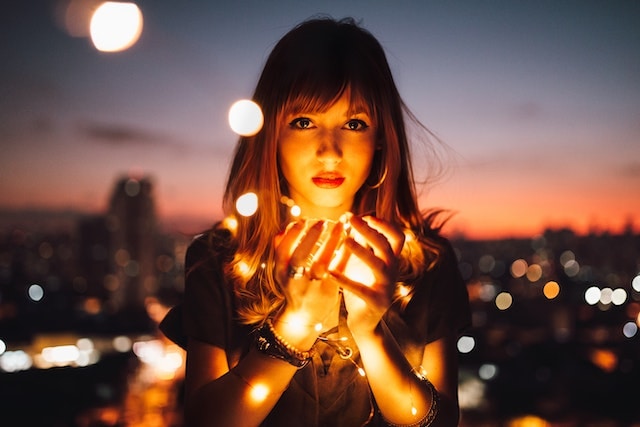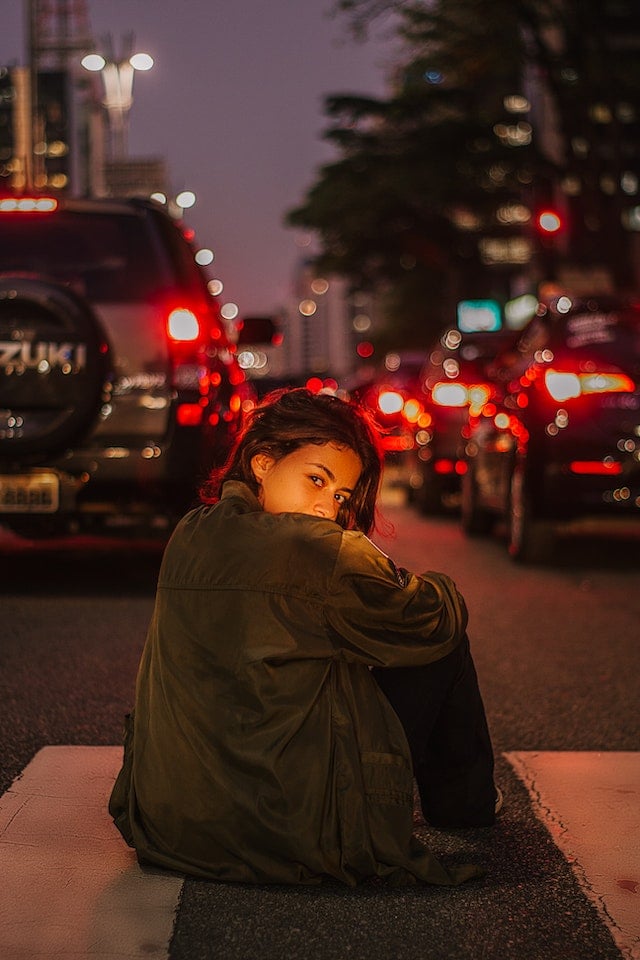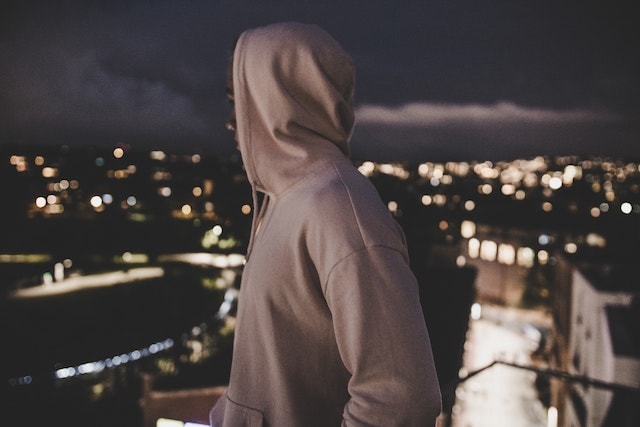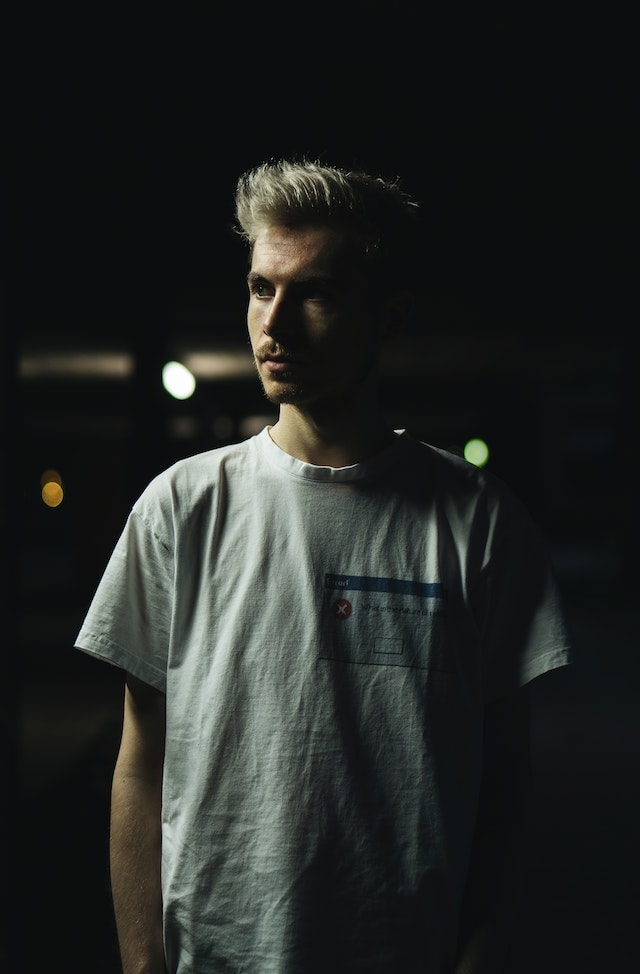While traditional portrait photography thrives in daylight, night portrait photography opens up a world of creative possibilities. Mastering night mode portraits requires specific techniques, proper equipment, and an understanding of low-light photography principles. Whether you're capturing romantic night pics or professional night photos, this comprehensive guide will help you achieve stunning results.
Well, night-mode portraits can be such an opportunity. However, it can be a little challenging for you. Night portrait shoots require the photographer to manipulate shutter speed, aperture, ISO, and more. Besides, there are certain dos and don'ts that you also need to keep in mind. Keep reading to know more about this.

In this article
Part 1: Must-Dos in Night Portraits
Let's start this discussion by exploring the major dos related to night portraits photoshoots. Some dos that you should consider are:
1. Shooting with a topic
One of the biggest challenges in night portrait photography is managing the dramatic change in visual appeal that occurs after sunset. Successfully executing night mode portraits requires careful planning and subject preparation to ensure your night photos maintain clarity and focus.
This will also allow you to take advantage of clicking pictures during special hour lighting. Besides, it will also help you to know how changing list settings can affect the scene. Another important thing to consider here is styling your subject. You need to make sure that your subjects look professional and choose the right type of clothing. So, try to understand the purpose of your night mode portraits.
2. Lighting your Subject
While shooting night portraits, based on the location, you may not get sufficient natural light to light up the subject. This is where you need to use some types of artificial lighting. Without this, you may not be able to capture the details of your subject. Your shots will look very blurry and underexposed. Well, artificial lighting need not be a flash. The source of artificial lighting can be anything.
Advanced night portrait techniques often involve multiple light sources to create depth and dimension. Professional photographers recommend using a combination of ambient city lights and controlled artificial lighting for the most compelling night pics. When editing these shots later, tools like Filmora's color grading features can help balance exposure and enhance the atmospheric quality of your nighttime imagery.

For example, it can be a car light, a phone flashlight, a billboard light and anything that can light up the subject, offering a decent amount of illumination to your camera. Make sure that the light is accessible. Experts suggest using off-camera flashlights for night portraits as it offers better flexibility. Based on your requirements, you can adjust the direction and brightness. Using a light stand can also be very helpful here.
3. Make Good Use of Night Mode Portrait
Modern cameras offer sophisticated night mode portraits functionality that can dramatically improve your night portrait photography results. These AI-powered features analyze scene conditions and automatically optimize settings for the best possible night photo output.
Sometimes, you need to depend on software instead of your camera's hardware for better results. Post-processing can enhance the exposure, level colors, effectively tune white balance, etc., and night mode can help you with that. When you choose this option, the camera will consider different factors, like the movement of the subjects, camera, light settings and more.
The camera will then take a series of photos at multiple exposure levels and then merge them to create a single image with great details. Even though night mode portraits can help you a lot, they may not work well while taking photos of moving objects. The reason behind this is that this mode takes multiple shots, and moving subjects would be blurred out. If it is a static scene, then go for it.
4. Shooting with a Stabilizer
For better results, you can use a camera stabilizer. A camera stabilizer will offer you the ability to take beautiful and smooth shots while moving. Stabilizers come in different configurations and sizes. They can effectively lower the vibration of the camera while moving. But shooting with a monopod, gimbal, or other rigs can be a little challenging for you. However, there are some tips that you can keep in your mind for better results, for example:
- Always try to maintain a perfect distance from the subject.
- Use wheels.
- You can also use electronic panning.
- Walk carefully.
- Close down the aperture.
- Allow your subject to move into the focus distance.

Experts suggest using a sturdy camera tripod, and it will be better to get a remote release. With this, you can trigger the camera without touching the shutter button, and it will reduce the movement of the camera.
Part 2: Don't-Dos in Night Portraits
1. Don't dress in dark
When it comes to wearing black for night portraits, experts suggest avoiding it unless you have proper light settings and you have your make-up done by an expert who can correct the color for shadows. Contemporary night portrait photography styling has evolved beyond simply avoiding dark colors. Modern night mode portraits can successfully incorporate darker clothing when paired with strategic lighting and proper camera settings. The key is understanding how different fabrics and colors interact with available light sources in your night pics.Sometimes, dark clothes may create an aging effect on the subject. Besides, if the lighting condition is not good, the photos will become much darker due to your dark dress. So, wear light-colored dresses. Besides, don't use shirts that have visible text, brand names or logos.

2. Don't do a capture shoot
Most photographers use single shooting mode or go for the capture shoot in many cases. That could be the manual mode, and sometimes it is done to adjust the shutter and aperture manually. During night shooting, some photographers use higher ISO. This means the lens will allow more light to come in. As a result, it can create a smear while capturing a moving object. But in some cases, using continuous shooting can help you to capture some of the best moments for night portraits. If you are shooting in a fast-paced scenario, then this can help you a lot. You may not use all the images you have captured, but you can find perfect portraits.
3. Don't Overuse Light- The Right Shutter Speed, ISO and Aperture
Another thing you need to avoid here is the overuse of light. You need to work on the primary exposure settings, i.e., the ISO, aperture and shutter speed. You should keep in mind that these three configurations will create exposure and influence the photos' overall brightness. One thing to consider while choosing the setting is to have a photo with a lot of detail in the mid-tones, highlights, and shadows.
When you overuse the light, it can affect the scene's depth of field. Besides, the sharpness of the subject will also get affected by this. To control the light, you need to choose the aperture based on the depth of field. For example, for a shallow effect, you can go for a wide aperture, like f/2.8. You can use a narrower aperture, like f/8, for a sharper background.
Talking about the shutter speed, for stationary subjects, you can go for 1/160s. If it is a moving subject, then 1/500s or above can work for you. Now, coming to the ISO, the default ISO value, i.e., ISO 100, is good for taking the highest-quality photos. If you think your portraits are overexposed, then increase the shutter speed to control the light.
4. Don't forget about white balance and Adjust It Before Shooting
Speaking about white balance, it is a setting to make sure the colors in the photos are natural and accurate and the photos don't have unrealistic colors. If the subject appears white in real but blue or red in the photos, then you need to adjust the white balance. Daylight white balance will be very warm for night photos. That's why you need to go for cooler settings, around 3200 to 4800, based on your environment and location.

For example, in city areas, a lower setting, i.e., 3400 to 3900k, can work great. On the other hand, for darker skies, white balance settings of 4000k and above will offer you the best results. Begin with the above suggestion and click some test photos while increasing 100k after every shot to find the right white balance settings.
However, you can also preset the white balance in your camera or edit the photos during post-processing to adjust the white balance. For example, you can use color correction to fix colors. Using this, you can make the photos look brighter or darker to make them appear natural and realistic. Always use a vector scope to make sure that your colors are accurate.
Essential Equipment for Night Portrait Photography
Successful night mode portraits require specific gear beyond your camera. Professional night portrait photographers recommend investing in fast lenses (f/1.4-f/2.8), sturdy tripods, and external lighting equipment. For content creators planning to create video tutorials or time-lapse sequences of their night photo sessions, Filmora's video editing suite provides the perfect platform for showcasing your work with professional transitions and effects.
Post-Processing Your Night Portrait Photography
Once you've captured your night portrait shots, post-processing becomes crucial for achieving professional results. The magic of night pics often happens during post-processing. Advanced editing techniques can transform good night photos into extraordinary art.
Filmora's advanced video editing capabilities can enhance your night photography workflow, especially when creating time-lapse sequences or video tutorials. When creating video content around your night portrait photography work, consider using Filmora's AI music composer to generate atmospheric soundtracks that complement the mood of your imagery. This AI-powered feature can create custom music that enhances the storytelling aspect of your photography videos.
Except for its AI features, Filmora also provided thounsands of transitions, effects, and templates. You can add these visual elements to improve your night portrait videos.
FAQs
How To Capture Good Portraits at Night?
As per the experts, the lower the aperture, the more light your camera will receive. This can make your night mode portraits difficult. So, you need to go for a slower shutter speed and make sure that there will be subject or camera movement. All you need to do is control the light.
What Should You Need to Avoid in Portrait Photography?
Some common mistakes that you need to avoid while shooting portraits are poor lighting, poor composition, bad background, using the incorrect lens, not properly focusing on the eyes, overexposure and more. Just follow the above-mentioned tips to get stunning night portraits.
What Are the Best Camera Settings for Night Photography?
You should use your camera in manual mode. Besides, utilizing long camera shutter speeds, around 30 seconds to 60 seconds, will be good. Sometimes, using auto-white balance, you can get great results. The experts also suggest keeping the aperture around f/11 and going for a low ISO, between 100 to 200.
What equipment do I need for professional night portrait photography?
Essential gear for night mode portraits includes a camera with good low-light performance, fast lenses (f/1.4-f/2.8), a sturdy tripod, and external lighting. For creating video content about your night portrait work, Filmora's editing tools can help showcase your techniques professionally.
How can I add music to my night photography videos?
When creating video content featuring your night pics, Filmora's AI music composer can generate atmospheric soundtracks that perfectly complement the mood of your night photos. This AI-powered feature understands the emotional tone of nighttime imagery and creates matching audio.
What's the difference between night mode and manual settings for night portrait photography?
Night mode portraits use AI to automatically optimize multiple shots, while manual settings give you complete creative control. Professional night portrait photography often combines both approaches depending on the specific shooting conditions and creative goals.



 100% Security Verified | No Subscription Required | No Malware
100% Security Verified | No Subscription Required | No Malware


